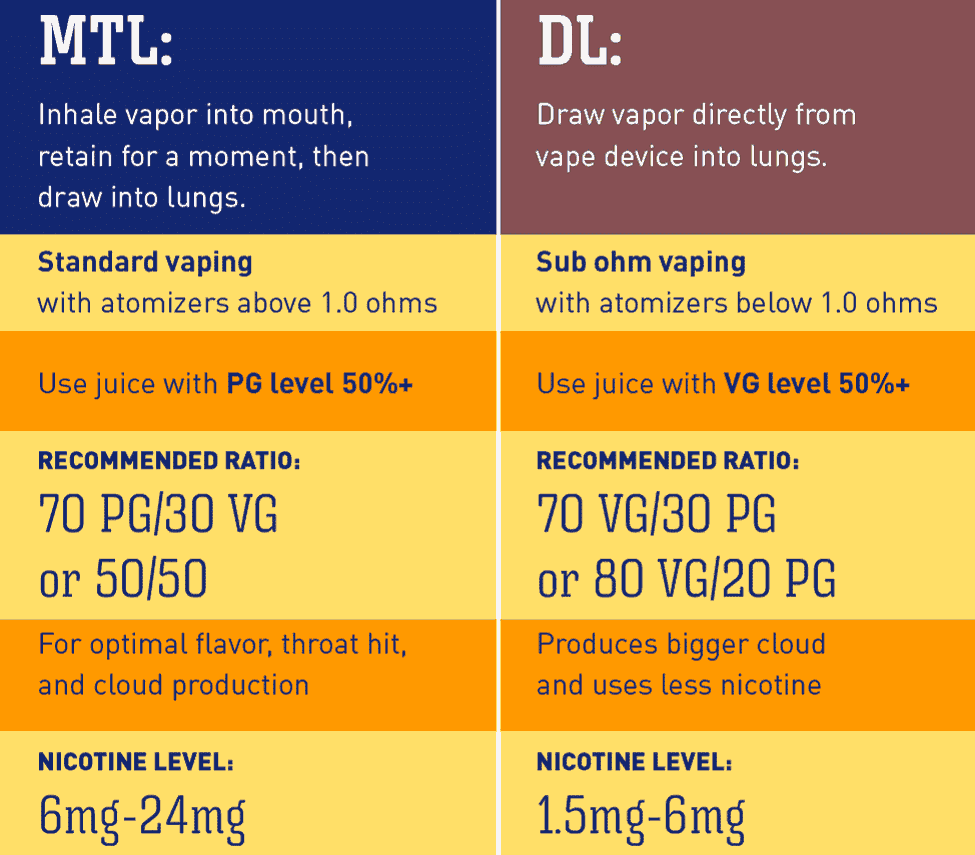When was the last time you saw someone smoking an actual cigarette? In just a few years, vaping has almost completely destroyed the cigarette industry. In fact, vaping and e-cigarettes have become more popular than conventional cigarettes across most major audience segments, including active military personnel. But this popular new form of smoking definitely has a learning curve. There’s a science behind vaping and new users have a lot to learn including new terminology, vape juice flavors and the ins and outs of various vaping products. Here’s everything you need to know about the science of vaping.
Vaping Is Helping Smokers Abandon Cigarettes
According to a research brief published by the Centers for Disease Control (CDC), substituting traditional cigarettes with vaping as a method to quit, shows more significant results than any other cessation aid — from the nicotine patch to nicotine gum. That’s good news for anyone trying to quit using tobacco products.
The Science Of Vaping – Infographic
When you first start to learn vaping vocabulary and techniques, the technology and science behind vaping can feel overwhelming. Things like ohms, vaporization and atomizer resistance can be tough to take in all at once. But this infographic gives you a great overview of the entire vaping process. 
Temperature Control & The Atomizer
Temperature control is another important part of vaping. Not understanding how to properly adjust your temperature can result in hot and bad tasting dry vape hits, burning up wicks too quickly, and not producing enough vapor. The key to proper temperature control is the atomizer.

After the wick pulls your vape juice into the heating coil, the atomizer excites the juice and weakens the molecular bonds until they are expelled as vapor. The correct temperature to produce vapor will vary between vape juices. If your juice has a high concentration of vegetable glycerin, then you will need to vape at a higher temperature.
Average Vaping Temperature Ranges
200º C – 250º C / 392º F – 480 º F
Vape Juice & Flavors
With thousands of commercially made vape juice concoctions on the market, there’s no shortage of flavors to choose from. But what exactly is in your Circus Bear Strawberry Banana Custard e-juice? How much nicotine is in it and how does it compare with traditional cigarettes? Contents and concentrations will vary between vape juices and manufacturers, but most vape juices contain the following ingredients:
- Vegetable Glycerin (VG)
- Propylene Glycol (PG)
- Nicotine
- Flavoring
90% of most vape juices are comprised of vegetable glycerin and propylene glycol. The other 10% typically includes nicotine and flavoring. However, nicotine is NOT a required ingredient in vape juice. There are many popular nicotine-free vape juices available.
What Are Ohms and Why Should You Care?
Ohms are an important part of vaping. But what is an Ohm and what does it have to do with your vapor cloud? If your atomizer’s electrical resistance is too high or too low, then you’ll probably have a disappointing vaping experience. Your specific ohm settings will vary depending on your vaporizer and preferred method of vaping: mouth-to-lung (MTL) or direct lung (DL).

A Safer Alternative To Traditional Smoking
Because electronic cigarettes don’t contain tobacco, smoke, tar, ash or carbon monoxide, they can be a safer alternative to smoking tobacco cigarettes. With such a bright future ahead, the range of user-friendly vaping devices and e-liquid products are certainly going to continue to dominate the market place. That’s excellent news for vape lovers everywhere.
Related Articles:
- Things To Consider Before You Start Vaping
- The History of Vaping And Why It’s a $10B Industry
- Ridiculous Vintage Print Ads That Would Be Banned Today

Frank Wilson is a retired teacher with over 30 years of combined experience in the education, small business technology, and real estate business. He now blogs as a hobby and spends most days tinkering with old computers. Wilson is passionate about tech, enjoys fishing, and loves drinking beer.












 6 Tips Before You Start A DIY Furniture Restoration Project
6 Tips Before You Start A DIY Furniture Restoration Project
Leave a Reply
You must be logged in to post a comment.